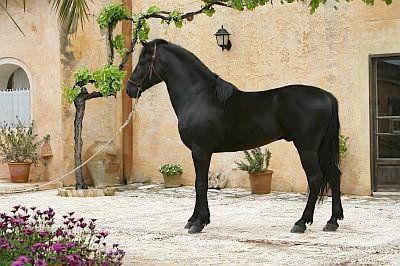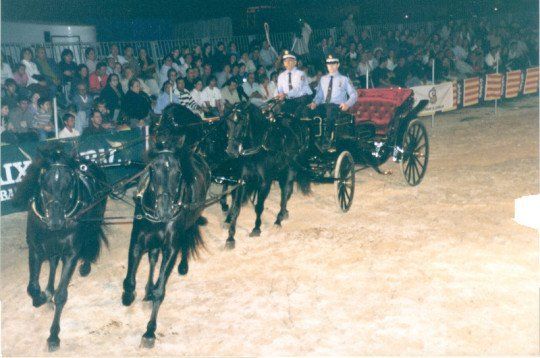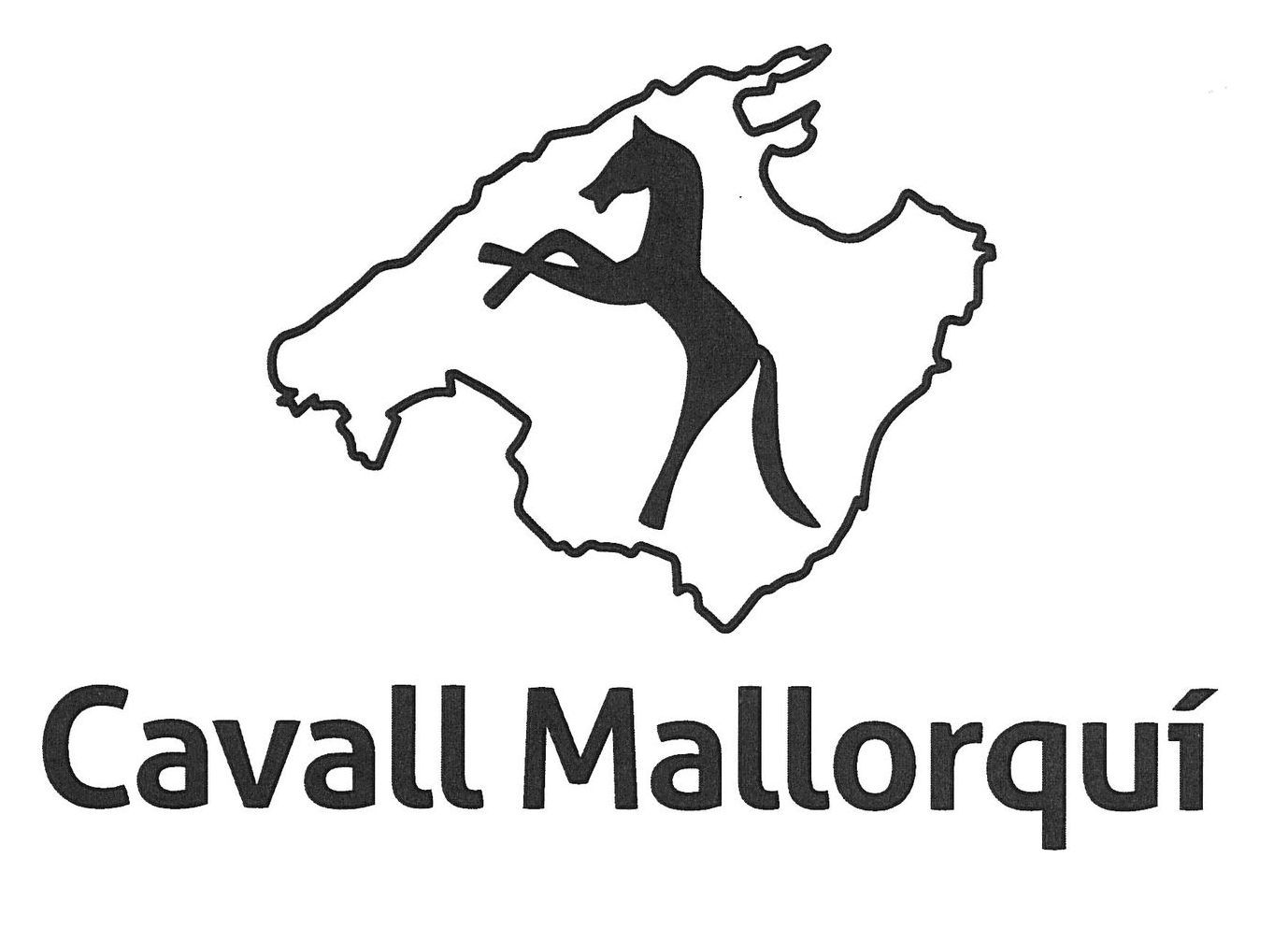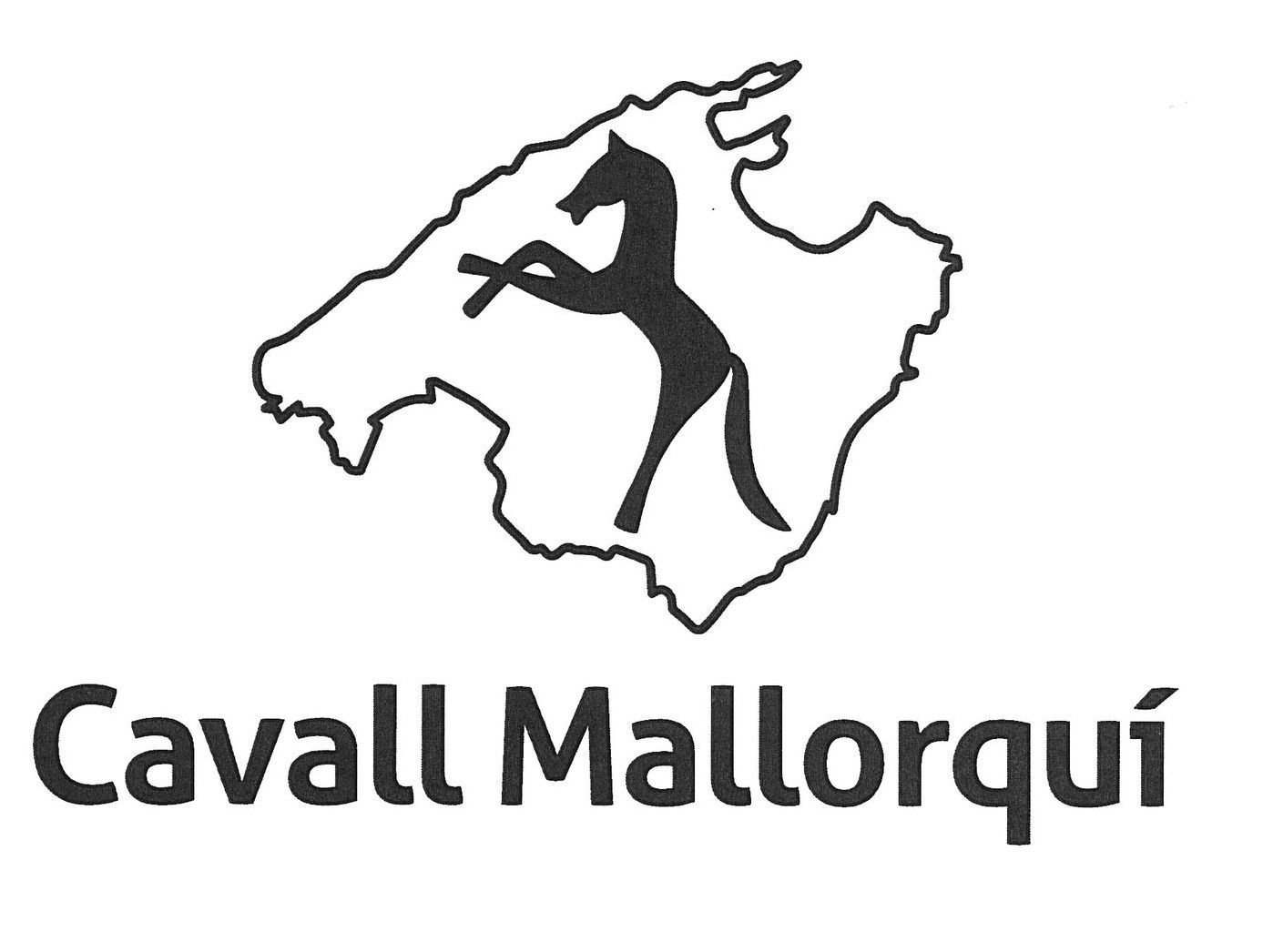
Origin of the Purebred Mallorcan
The Purebred Mallorcan horse has its origins on the southern coast of Western Europe.
Horses that form a morphological trunk and originally are the Sardo horse, the San Fratellano of Sicily, the Murguese, the Menorquín,...
In the past, it was used mainly in agricultural work as well as in mule production, whose stock was exported mainly to America.
Since 1989, the PRMallorquín has had a Genealogical Book managed by the Spanish Association of Breeders and Owners of Purebred Mallorcan Horses.

PAGINA WEB CO-FINANCIADA, del 6 de març al 31 de desembre, POR:



The Majorcan Race
Historical evolution of the race and the Association.
The purebred Mallorcan horse is an indigenous equine breed of the Balearic Islands, with maximum concentration on the island of Mallorca, as its name indicates, which is currently considered in a state of threat due to its low population and the great genetic erosion suffered by the population in the past centuries due to the continuous introduction of exotic genes by crossing with imported breeds.
Along with the Menorcan Horse and the now-disappeared Catalan Horse, it comes from a group of southern horses that populated the north-east of the Iberian Peninsula and that as a whole are in danger of extinction. It is, therefore, a genetic resource of great historical, environmental, sociocultural and zootechnical importance, to which we must guarantee its conservation as a genetic heritage that must not suffer any deterioration and that must be bequeathed to generations future.
At the end of the eighties of the last century, the breed was officially recognized by its inclusion in the Open Registration Register of the Horse Breeding Prefecture of the Ministry of Defense. The Majorcan Horse has since 1989 a Pedigree Book managed by the Association of Purebred Majorcan Horse Breeders and Owners.
In the Order of the Minister of Agriculture and Fisheries of June 12, 2003, published on July 2, 2003, the zootechnical standards for the purebred Majorcan horse are established, operating under these standards until the Association of Breeders and Owners of the Mallorcan Horse request to update the Specific Regulations of the Pedigree Book of the breed, adapting it to the rules published in the Royal Decree 2129/2008 which establishes the National Program for Conservation, Improvement and Promotion of livestock breeds. The association, following the agreements of the Management Committee of the Breed Conservation and Improvement Program, proceeds to adapt the regulations to current regulations. This update is made official in the Resolution of October 22, 2019, published on December 31, 2019, which publishes the Resolution of October 18 of the General Directorate of Agricultural Production and Markets that approves the Breeding Program of the breed, the version has been updated and consolidated on November 13, 2024.
The Majorcan Breed Horse Breeders and Owners Association (AECABMA) is officially recognized in the previous regulations for the door of the Breed's Pedigree Book and for the management of its improvement program.
This new document is presented so that the update of the Majorcan Horse Breeding Program, adapted to R(UE) 2016/1012 and Royal Decree 45/2019 of February 8, is officially recognized, as well as the confirmation of the official recognition of AECABMA as the entity that manages it.
Origin
The Majorcan horse is included in the group of horses of southern origin in the Iberian Peninsula, of good size, strong and suitable for work, which gave rise, among other populations, to the Catalan race, now extinct, to the Mallorcan and in Menorcan. The centuries of contact with the other ethnic group spread across the North of Spain, certainly contributed some characteristics, such as the color of the coat and coat, typical of these races. The lucky action of different groups of fans achieved not only the recovery of this breed in a very difficult moment, but also the official morphotype was defined through the Register Matrícula opened in Madrid, by the Head of Horse Breeding of the Ministry of Defense.
Characteristics
It is an animal with a calm, strong, rustic and very sober character. It is eumetrically shaped, sublongilini and with a slightly convex fronto-nasal profile. Its silhouette is slim and the color of its coat is black. Most outstanding characteristics The head is elongated, dry and fleshy, of medium size pulling to large, with small, erect ears and almost always full of hair. The eyes are dark and clearly visible due to the markedness of the orbital arches. The nose is broad and strong with slightly prominent nostrils. The neck is short, and although deep it is not very wide. The mane is abundant and the hair is strong and thick. He has a broad chest and arched ribs. The back is straight, although it has a tendency to saddle with age. The rump is long and sloping and generally flat-muscled. The limbs are well plumbed, not much muscled, with long and oblique hindquarters, well stocked with hair and with strong and broad knees and hocks. The legs are also wide and strong. The tail is set low, long and has long, strong hair. The color of the hair is black, in all its variants, which gives it an elegant and serious look. Small white spots on the face in the shape of a kite or string are acceptable.
General data
The entry of foreign races into the island of Mallorca from the middle of the 19th century until much of the 20th century caused, from the first third of the century, the progressive disappearance of the Mallorcan race evassadas, which accompanied by the replacement of animal traction by mechanics, indirectly motivated a total indifference to the maintenance of this race in purity. The achievement of the Majorcan Breed Registry - Registration, in 1988, accompanied by the efforts of many different institutions and people, marked a decisive milestone for this breed. The census of registered animals, in December 2023, exceeds 300 heads.
The functionality of this breed, which had always been for work and mule production, has shifted in recent years to a pure breeding orientation for the practice of horse riding. Given its harmony of forms, the elegance of the black hair color and the fact that it is a docile and calm animal, the Mallorcan horse has a high market price today, which predicts its stability as a breed, not only worthy of conservation because it is ours, but because of the importance of its genetics.






MORPHOLOGY OF THE MALLORCAN RAÇA
Racial prototype of the purebred Mallorcan horse.
A. General characteristics.
It is a horse of eumetric type, sublonginate and with a slightly convex profile, and a slender silhouette.
B. Morphological characteristics:
1) Head: Long and gaunt, rather large, slightly convex profile, short, straight ears with full inside. Prominent eye sockets, lively gaze, wide and strong muzzle, not very prominent nostrils.
2) Neck: Short and deep, not very thick. Well inserted into the trunk and with abundant mane of thick, hard hair.
3) Trunk: Slightly elongated.
Cross, manifest.
Back, elongated and slightly oblique.
Chest, broad, muscular and deep.
Thorax with arched ribs.
Back: straight with a tendency to become saddle-like with age.
Loin, with discreet muscular development and good insertion into the back and rump.
Belly, not excessively voluminous, with proportionate flanks.
Croup, long and slightly sloping.
The tail is set low and is almost always kept at rest, with hard, thick hair.
4) Thoracic or front legs: Well-established, with medium musculature, powerful arm and forearm of medium length. Wide knees, powerful and lean cannons. Long and oblique pasterns and well provided with hair. Wide and hard hoof.
5) Hindquarters: Thigh and buttocks with medium musculature, powerful and clear hocks.
The regions below the tarsal joints will have the same characteristics as the forelimbs.
A. Phaneroptic characteristics: Black coat, all variants are allowed. Any other coat is excluded. White spots on the face (stars) are allowed.
B. Behavioral traits and temperament
It is a very resistant, rustic, sober horse, especially adapted to its environment.
E. Functional characteristics and aptitudes.
Saddle horse, with great aptitude for riding and hitching, at one time it was widely accepted for agricultural work.
A. Objectionable Defects
In addition to those general for the species, the following are indicated as more frequent in the breed, in order to ensure their elimination:
Head too small. Neck too short, like a deer or inverted. Withers not very prominent and ribs not very curved. Chest too shallow. Croup too drooping.
Aplomb deviated from the vertical, especially on the left and closed hocks. Extensive areas of white spots on the face.
Racial prototype of the purebred Mallorcan horse.
A. General characteristics.
It is a horse of eumetric type, sublonginate and with a slightly convex profile, and a slender silhouette.
B. Morphological characteristics:
1) Head: Long and gaunt, rather large, slightly convex profile, short, straight ears with full inside. Prominent eye sockets, lively gaze, wide and strong muzzle, not very prominent nostrils.
2) Neck: Short and deep, not very thick. Well inserted into the trunk and with abundant mane of thick, hard hair.
3) Trunk: Slightly elongated.
Cross, manifest.
Back, elongated and slightly oblique.
Chest, broad, muscular and deep.
Thorax with arched ribs.
Back: straight with a tendency to become saddle-like with age.
Loin, with discreet muscular development and good insertion into the back and rump.
Belly, not excessively voluminous, with proportionate flanks.
Croup, long and slightly sloping.
The tail is set low and is almost always kept at rest, with hard, thick hair.
4) Thoracic or front legs: Well-established, with medium musculature, powerful arm and forearm of medium length. Wide knees, powerful and lean cannons. Long and oblique pasterns and well provided with hair. Wide and hard hoof.
5) Hindquarters: Thigh and buttocks with medium musculature, powerful and clear hocks.
The regions below the tarsal joints will have the same characteristics as the forelimbs.
A. Phaneroptic characteristics: Black coat, all variants are allowed. Any other coat is excluded. White spots on the face (stars) are allowed.
B. Behavioral traits and temperament
It is a very resistant, rustic, sober horse, especially adapted to its environment.
E. Functional characteristics and aptitudes.
Saddle horse, with great aptitude for riding and hitching, at one time it was widely accepted for agricultural work.
A. Objectionable Defects
In addition to those general for the species, the following are indicated as more frequent in the breed, in order to ensure their elimination:
Head too small. Neck too short, like a deer or inverted. Withers not very prominent and ribs not very curved. Chest too shallow. Croup too drooping.
Aplomb deviated from the vertical, especially on the left and closed hocks. Extensive areas of white spots on the face.








